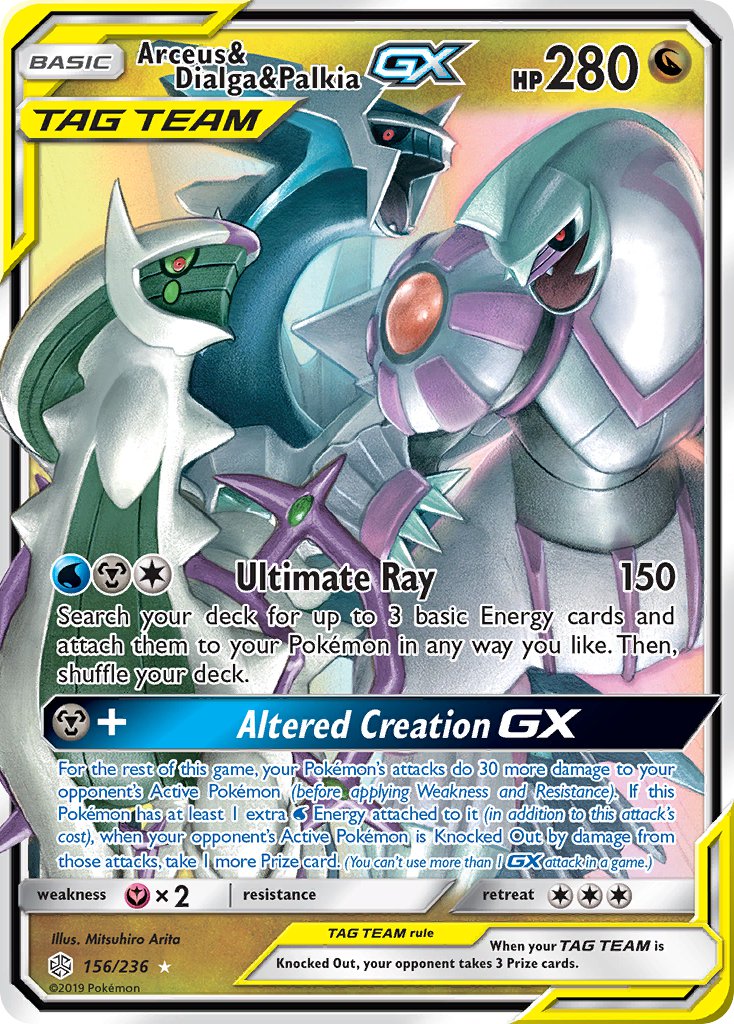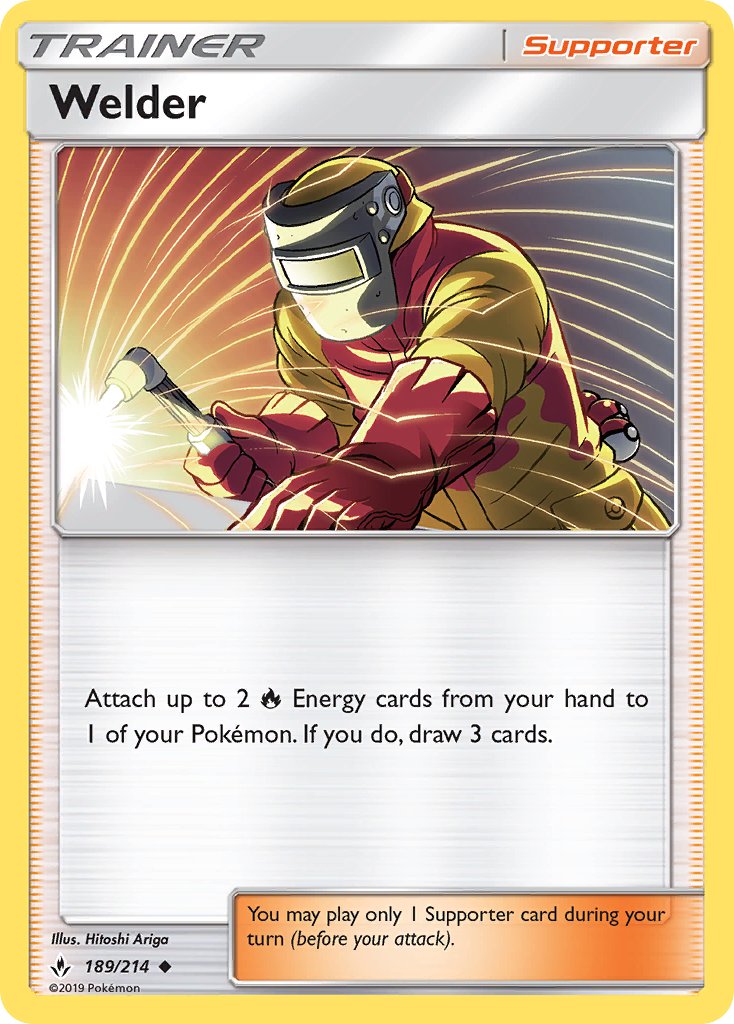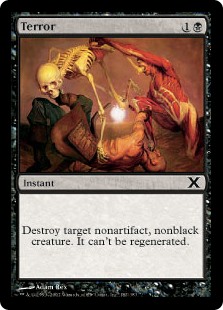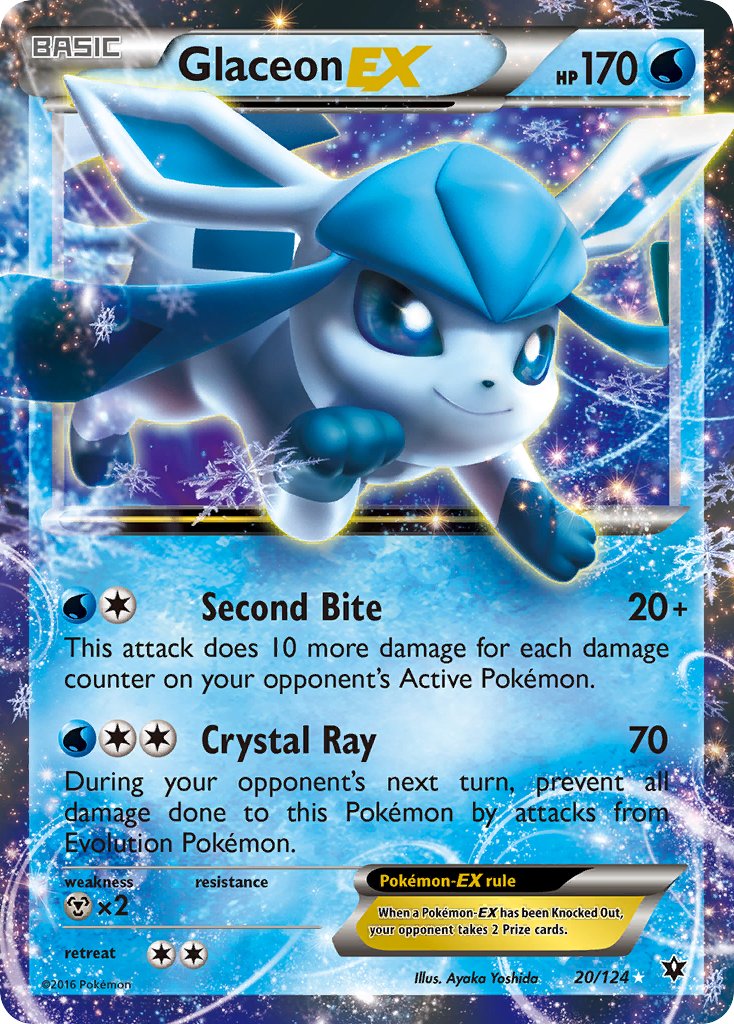I decided to write an article because - why not? I think the topic is quite interesting.
We are used to thinking that extremely strong cards - ones that dominate tournaments through their sheer power of high numbers and low costs - are universally bad for the game. And we are completely right on that.
However, what happens when we fight fire with fire? We might not put out the fire, we might not address the root core and cause of the issue, but we might be able to contain the damage and get more control over what’s viable and what isn’t. Once we understand a bit more about why these cards become oppressive, we might realize that their oppressiveness might sometimes be used for good.
For this example we have to assume that the newly-showcased Rayquaza VMAX is as broken as it appears, and that it can become a household, Tier-1 deck. That is not a given, and we will have to wait until the card releases to truly learn about its power level, but that assumption will help us in analyzing the potential of its oppressiveness in helping the Standard metagame grow. We will return to this topic soon, but before that happens, we must analyze a couple of different cards. One of them that’s worth discussing, which just recently had the same but opposite effect, is obviously “Arceus & Dialga & Palkia Tag Team GX”.

The nature in which “the ADP” has limited single-prize and even double-prize decks seems to be clear to most players - the “Altered Creation GX” attack’s power is increased as the number of prizes taken for a Pokemon goes down, with 100% effectiveness on single-prizers, 50% effectiveness on double-prizers and measly 33% effectiveness on triple-prizers. And that's just the sheer numbers, which don't account for the fact that the attack's power is much less effective of triple-prize Pokemon in general, because of the game's six-prize set up. This effectively eliminated all non-triple-prize decks from the metagame, cutting off that category from the competitive environment entirely.
This is an example of gatekeeping. It bears different names, designers will generally speak about "limiting design space", but for the sake of this article, we'll stick with "gatekeeping". In general, a gatekeeping card or deck is not defined by its raw power, but by getting a massive advantage in specific situations, usually related to how the opponent’s deck is built. If your opponent’s deck has or doesn’t have certain features, or isn’t built specifically to counter you, then their loss is almost certain. The card/deck/mechanic "gatekeeps" everything that isn't ready to fight it.
For another example of a gatekeeping card, we can look to Welder - a card that was simply too strong, and created a “you have to be this fast to ride” test, that every new potential deck had to pass to compete. Even when Fire decks were not at their prime, the prospect of simply being outpaced by a Welder deck meant that many “rogue” decks had nothing to show for, as their set-up was simply too sluggish to compete. A deck (or a card, in this example) does not have to always be the “Best Deck In the Format” to have an adverse effect on deck selection.

For a very clear and classical example of gatekeeping, we can look to Magic the Gathering and its “Terror” card, which literally made upwards of 90% of each Magic set completely unplayable for decades. Because characters - Creatures - in Magic have a cost you need to pay to play them, and Terror was a “removal card”, which allowed you to destroy almost any creature instantly for the measly cost of 2, it meant that any Creature with a cost somewhere above 3 needed to be ridiculously good or have an immediate impact to even be considered viable. This led to the phrase “Dies to Removal” becoming a meme, but also a staple of judging Magic cards’ viability.

Gatekeeping also doesn’t have to pertain to a single card or deck, it can apply to a whole badly-designed mechanic. Multiprizers (whether the double or triple-prize variety) are inherently unbalanced, as their damage output AND health are increased while maintaining the same amount of resources needed to set them up. This limits the design space of competitive single-prizers, which suddenly have to deal massively increased damage to remain competitive. If you’re looking at the currently-releasing cards and judging them on whether or not they “die to VMAXes”, then you know exactly what I’m talking about.
But is gatekeeping always bad, or is it a design feature? Can we use the force of limiting your opponent’s deck choices for good? We absolutely can. Take a look at Glaceon EX.

These types of cards appear quite frequently and have a pretty clear gatekeeping effect - they force your opponent to use a specific Stage of Pokemon to attack and avoid the damage prevention effect. The trick here is that they do not ask your opponent to feature an extremely specific effect, or to achieve a high enough tempo of acceleration, but simply that your opponent’s deck is built in a healthy way. It’s a way of punishing “one trick pony” decks by providing a counter that’s strong, that’s wide enough to not be gimmicky, but not universal. These cards do not need to be playable to have an effect on the metagame - they simply act as guardians of the format, keeping things in check. It is true that when they activate, it might lead to boring and one-sided games. It's a clear signal to the designers, that when the most powerful decks would rather lose to a gatekeeping deck than give up their power and box around then, something has went terribly wrong.
With that in mind, what can a fully-powered Rayquaza VMAX deck do? It might be the first VMAX to be able to consistently (and relatively quickly) knock-out opposing VMAXes in a single turn, whereas previously most VMAXes relied on attacks that dealt between 250 and 300 damage. The ability to outpace and outdamage other VMAX decks can prove to have a gatekeeping effect on VMAXes in general - essentially, if your plan is to “just deal damage”, Rayquaza VMAX simply does it better. That sounds like an example of gatekeeping, but what if that’s exactly the class of cards we want to remove from the format?

Rayquaza VMAX – Dragon – HP320
VMAX Pokemon (Rapid Strike) – Evolves from Rayquaza V
Ability: Sky High Wave
Once during your turn, you may discard all cards from your hand. If you do, draw 3 cards.
[R][L] G-Max Burst: 20+ damage. You may discard either any number of basic [R] Energy or any number of basic [L] Energy from this Pokemon. This attack does 80 more damage for each Energy discarded in this way.
When your Pokemon VMAX is Knocked Out, your opponent takes 3 Prize cards.
This “dream Rayquaza'' - a fully competitive FlaffQuaza deck - still has weaknesses, even if they’re not of an auto-lose kind. While its ability to knock-out VMAXes can prove to be respectable, a regular double-prize V Pokemon that can OHKO Rayquaza VMAX - such as Zacian V - is a dangerous threat. Same can be said about other double-prizing, or even single-prizing decks, like Rapidash V or Mad Party. What you’re gaining in damage, you’re losing in price trades. That said, Rayquaza’s set-up looks to be tight enough to fit some alternative attackers, perhaps making these match-ups more interesting than simple and quick dunks. Meanwhile, rogue decks that could lose to straightforward VMAX decks might find themselves freed from their oppressors, which just stop appearing competitively because of Rayquaza VMAX's gatekeeping effect.
All of this is, obviously, a big “if”. Rayquaza VMAX might just be too slow, or perhaps its weaknesses that could enable more interesting decks to flourish will ultimately be its undoing. But more than that speculation I was interested in its possible effects on the metagame - a card that’s designed to be oppressive, but which oppressiveness can be put to good use. The marketing seems to hype the card up quite a bit - let us see if it lives up to it.
We are used to thinking that extremely strong cards - ones that dominate tournaments through their sheer power of high numbers and low costs - are universally bad for the game. And we are completely right on that.
However, what happens when we fight fire with fire? We might not put out the fire, we might not address the root core and cause of the issue, but we might be able to contain the damage and get more control over what’s viable and what isn’t. Once we understand a bit more about why these cards become oppressive, we might realize that their oppressiveness might sometimes be used for good.
For this example we have to assume that the newly-showcased Rayquaza VMAX is as broken as it appears, and that it can become a household, Tier-1 deck. That is not a given, and we will have to wait until the card releases to truly learn about its power level, but that assumption will help us in analyzing the potential of its oppressiveness in helping the Standard metagame grow. We will return to this topic soon, but before that happens, we must analyze a couple of different cards. One of them that’s worth discussing, which just recently had the same but opposite effect, is obviously “Arceus & Dialga & Palkia Tag Team GX”.

The nature in which “the ADP” has limited single-prize and even double-prize decks seems to be clear to most players - the “Altered Creation GX” attack’s power is increased as the number of prizes taken for a Pokemon goes down, with 100% effectiveness on single-prizers, 50% effectiveness on double-prizers and measly 33% effectiveness on triple-prizers. And that's just the sheer numbers, which don't account for the fact that the attack's power is much less effective of triple-prize Pokemon in general, because of the game's six-prize set up. This effectively eliminated all non-triple-prize decks from the metagame, cutting off that category from the competitive environment entirely.
This is an example of gatekeeping. It bears different names, designers will generally speak about "limiting design space", but for the sake of this article, we'll stick with "gatekeeping". In general, a gatekeeping card or deck is not defined by its raw power, but by getting a massive advantage in specific situations, usually related to how the opponent’s deck is built. If your opponent’s deck has or doesn’t have certain features, or isn’t built specifically to counter you, then their loss is almost certain. The card/deck/mechanic "gatekeeps" everything that isn't ready to fight it.
For another example of a gatekeeping card, we can look to Welder - a card that was simply too strong, and created a “you have to be this fast to ride” test, that every new potential deck had to pass to compete. Even when Fire decks were not at their prime, the prospect of simply being outpaced by a Welder deck meant that many “rogue” decks had nothing to show for, as their set-up was simply too sluggish to compete. A deck (or a card, in this example) does not have to always be the “Best Deck In the Format” to have an adverse effect on deck selection.

For a very clear and classical example of gatekeeping, we can look to Magic the Gathering and its “Terror” card, which literally made upwards of 90% of each Magic set completely unplayable for decades. Because characters - Creatures - in Magic have a cost you need to pay to play them, and Terror was a “removal card”, which allowed you to destroy almost any creature instantly for the measly cost of 2, it meant that any Creature with a cost somewhere above 3 needed to be ridiculously good or have an immediate impact to even be considered viable. This led to the phrase “Dies to Removal” becoming a meme, but also a staple of judging Magic cards’ viability.
Gatekeeping also doesn’t have to pertain to a single card or deck, it can apply to a whole badly-designed mechanic. Multiprizers (whether the double or triple-prize variety) are inherently unbalanced, as their damage output AND health are increased while maintaining the same amount of resources needed to set them up. This limits the design space of competitive single-prizers, which suddenly have to deal massively increased damage to remain competitive. If you’re looking at the currently-releasing cards and judging them on whether or not they “die to VMAXes”, then you know exactly what I’m talking about.
But is gatekeeping always bad, or is it a design feature? Can we use the force of limiting your opponent’s deck choices for good? We absolutely can. Take a look at Glaceon EX.

These types of cards appear quite frequently and have a pretty clear gatekeeping effect - they force your opponent to use a specific Stage of Pokemon to attack and avoid the damage prevention effect. The trick here is that they do not ask your opponent to feature an extremely specific effect, or to achieve a high enough tempo of acceleration, but simply that your opponent’s deck is built in a healthy way. It’s a way of punishing “one trick pony” decks by providing a counter that’s strong, that’s wide enough to not be gimmicky, but not universal. These cards do not need to be playable to have an effect on the metagame - they simply act as guardians of the format, keeping things in check. It is true that when they activate, it might lead to boring and one-sided games. It's a clear signal to the designers, that when the most powerful decks would rather lose to a gatekeeping deck than give up their power and box around then, something has went terribly wrong.
With that in mind, what can a fully-powered Rayquaza VMAX deck do? It might be the first VMAX to be able to consistently (and relatively quickly) knock-out opposing VMAXes in a single turn, whereas previously most VMAXes relied on attacks that dealt between 250 and 300 damage. The ability to outpace and outdamage other VMAX decks can prove to have a gatekeeping effect on VMAXes in general - essentially, if your plan is to “just deal damage”, Rayquaza VMAX simply does it better. That sounds like an example of gatekeeping, but what if that’s exactly the class of cards we want to remove from the format?

Rayquaza VMAX – Dragon – HP320
VMAX Pokemon (Rapid Strike) – Evolves from Rayquaza V
Ability: Sky High Wave
Once during your turn, you may discard all cards from your hand. If you do, draw 3 cards.
[R][L] G-Max Burst: 20+ damage. You may discard either any number of basic [R] Energy or any number of basic [L] Energy from this Pokemon. This attack does 80 more damage for each Energy discarded in this way.
When your Pokemon VMAX is Knocked Out, your opponent takes 3 Prize cards.
This “dream Rayquaza'' - a fully competitive FlaffQuaza deck - still has weaknesses, even if they’re not of an auto-lose kind. While its ability to knock-out VMAXes can prove to be respectable, a regular double-prize V Pokemon that can OHKO Rayquaza VMAX - such as Zacian V - is a dangerous threat. Same can be said about other double-prizing, or even single-prizing decks, like Rapidash V or Mad Party. What you’re gaining in damage, you’re losing in price trades. That said, Rayquaza’s set-up looks to be tight enough to fit some alternative attackers, perhaps making these match-ups more interesting than simple and quick dunks. Meanwhile, rogue decks that could lose to straightforward VMAX decks might find themselves freed from their oppressors, which just stop appearing competitively because of Rayquaza VMAX's gatekeeping effect.
All of this is, obviously, a big “if”. Rayquaza VMAX might just be too slow, or perhaps its weaknesses that could enable more interesting decks to flourish will ultimately be its undoing. But more than that speculation I was interested in its possible effects on the metagame - a card that’s designed to be oppressive, but which oppressiveness can be put to good use. The marketing seems to hype the card up quite a bit - let us see if it lives up to it.

